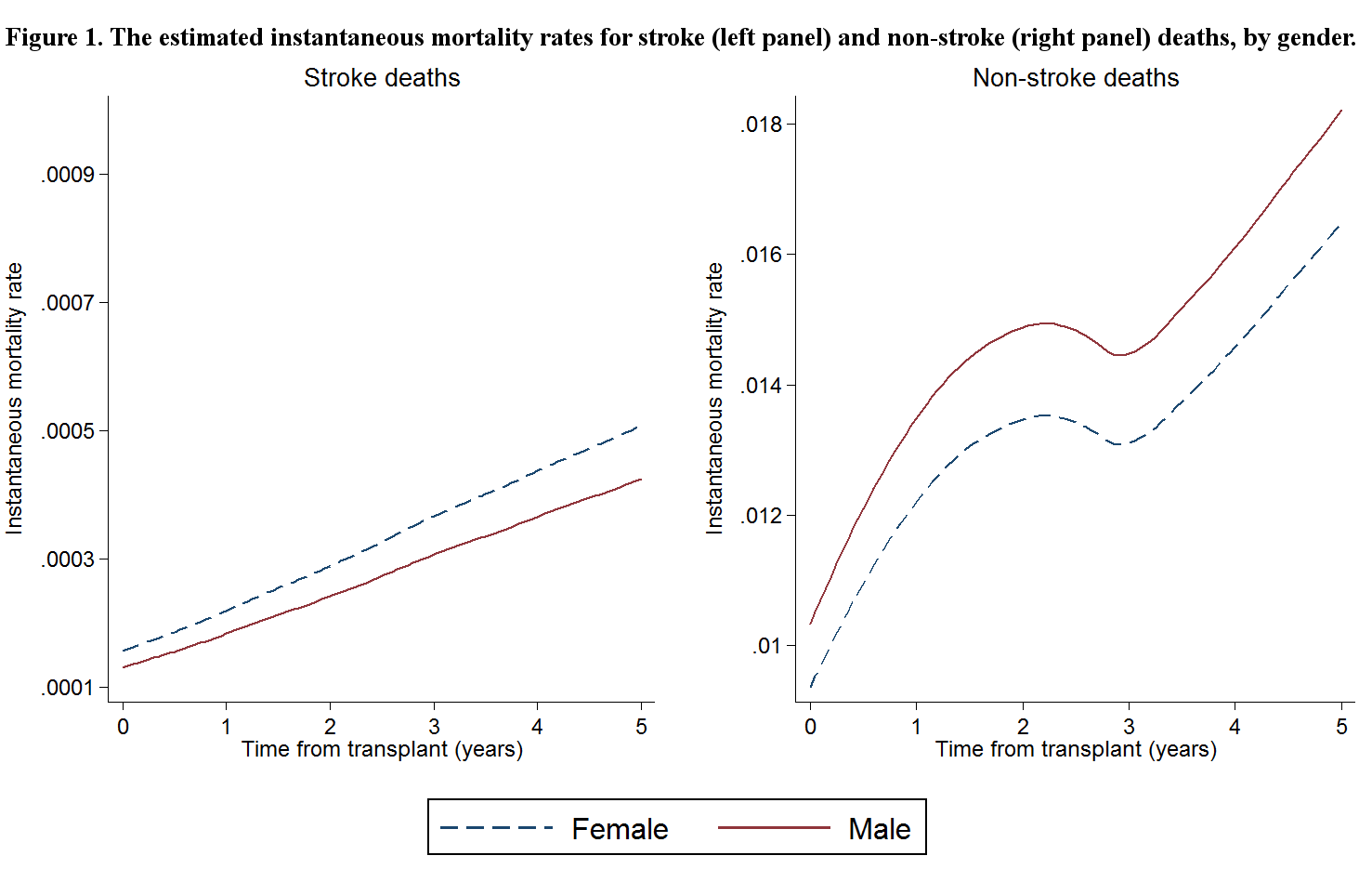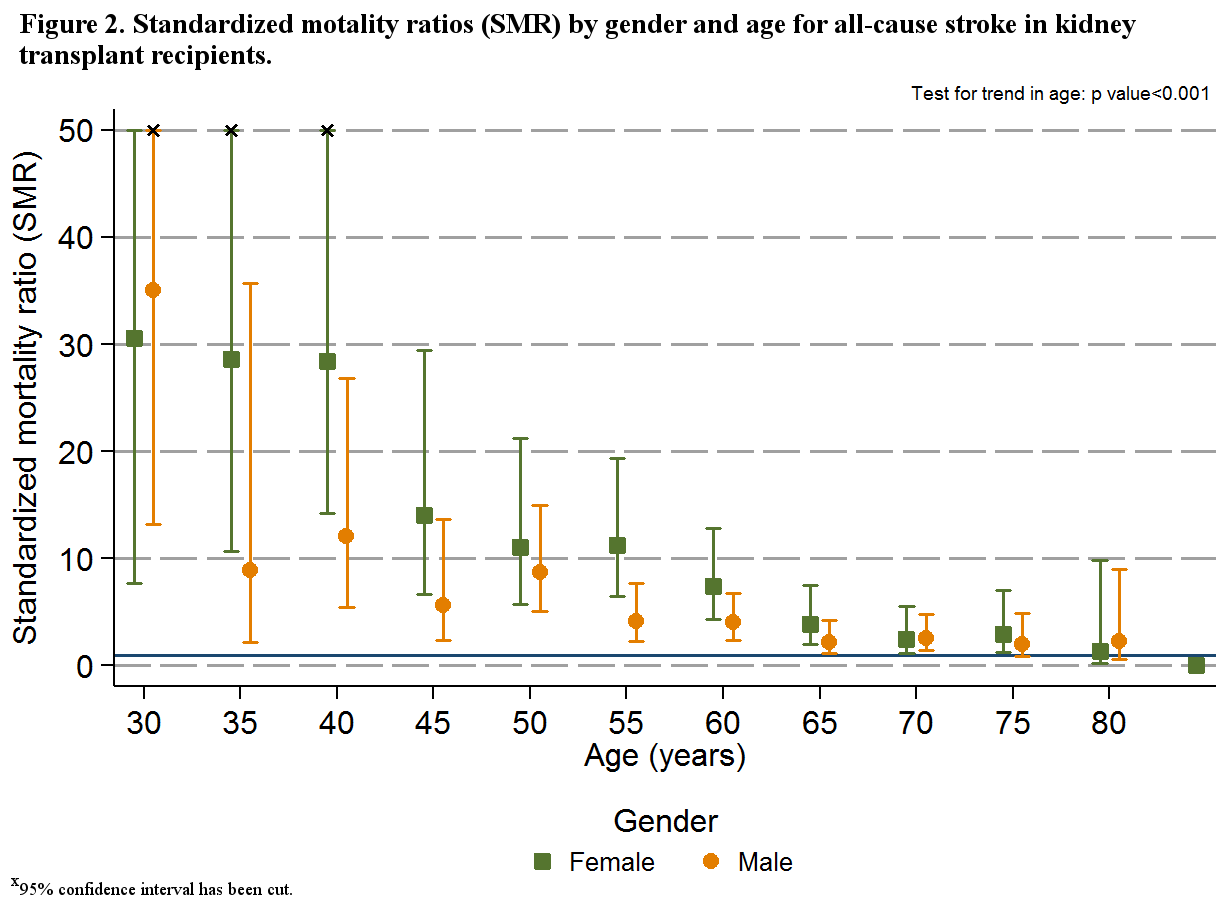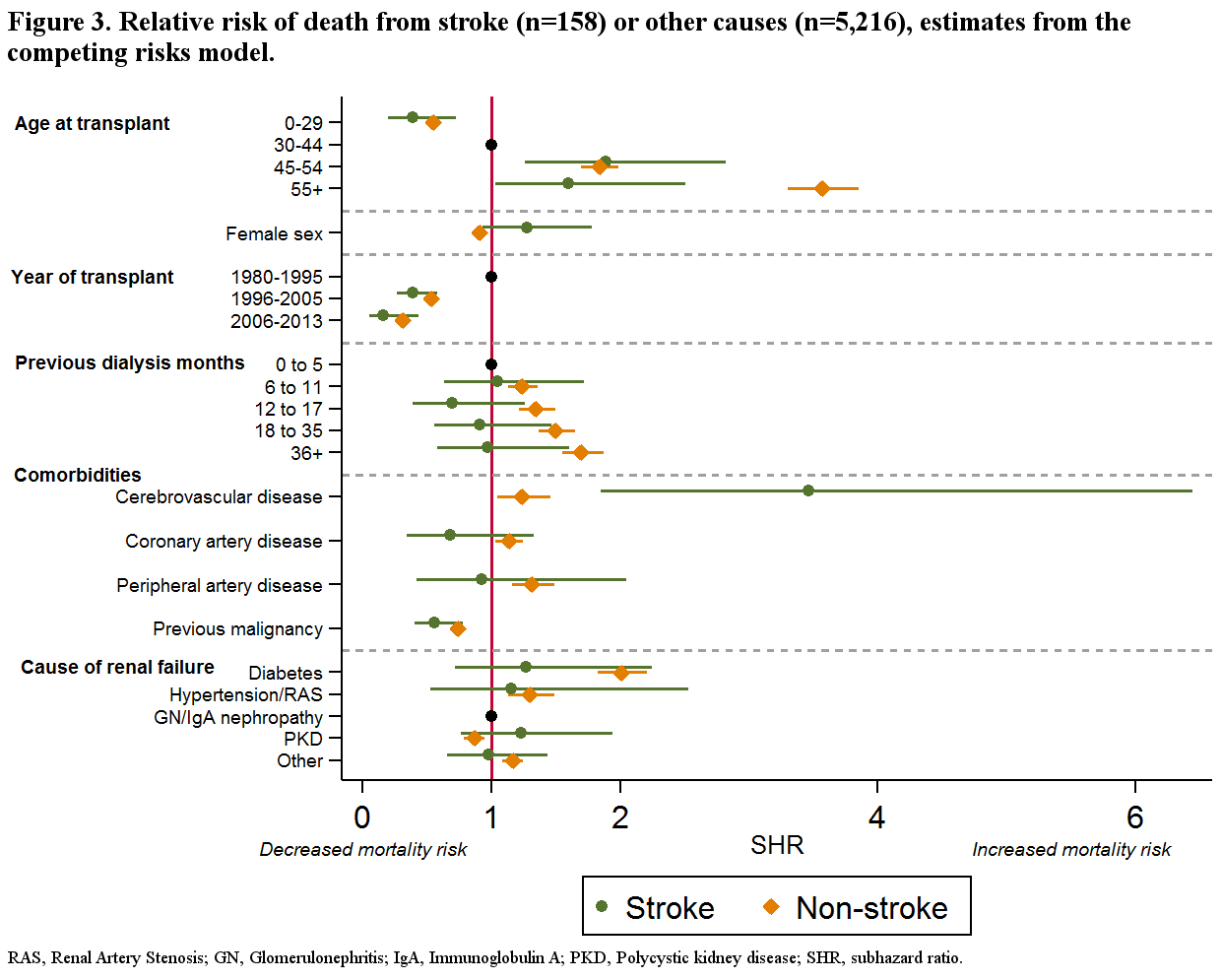Nicole L De La Mata, Australia has been granted the TTS Young Investigator Scientific Award
Stroke Mortality in Kidney Transplant Recipients: A Retrospective Population-Based Cohort Study using Data Linkage
Nicole De La Mata1, Philip Masson2, Rustam Al-Shahi Salman3, Patrick Kelly1, Angela C Webster1,4,5.
1Sydney School of Public Health, Sydney Medical School, University of Sydney, Sydney, Australia; 2Department of Renal Medicine, Royal Free London NHS Foundation Trust, London, United Kingdom; 3Centre for Blinical Brain Sciences, University of Edinburgh, Edinburgh, United Kingdom; 4Centre for Renal and Transplant Research, Westmead Hospital, Westmead, Australia; 5Centre for Kidney Research, The Children's Hospital at Westmead, Sydney, Australia
the CELESTIAL study.
Introduction: People with kidney transplants have a higher risk of stroke than the general population but their risk of dying from a stroke remains unclear. We aimed to compare stroke deaths in kidney transplant recipients with the general population.
Materials & Methods: We established the primary cause of death for incident kidney transplant recipients using data linkage between the Australian and New Zealand Dialysis and Transplant Registry (ANZDATA) and national death registries: Australia, 1980-2013 and New Zealand, 1988-2012. We used indirect standardization to estimate standardized mortality ratios (SMR) with 95% confidence intervals (CI) and a competing risks regression model to identify risk factors for stroke and non-stroke mortality.
Results & Discussion: Among 17,621 kidney transplant recipients, there were 158 stroke deaths and 5,126 non-stroke deaths in 160,332 person-years of follow-up. Stroke death rates steadily increased from transplantation. Non-stroke deaths rapidly increased from transplantation until 6 months’ follow-up (Fig. 1).

All-cause stroke SMR were higher in people who were younger and particularly in females (Fig. 2). Kidney transplant recipients aged 30-49 were over 9 times the expected in the general population (Table 1; Females: SMR 21.3, 95% CI: 13.9-32.7; Males SMR 9.9, 95% CI: 6.2-15.9).


A higher risk of stroke death was associated with older age at transplant, earlier year of transplant and cerebrovascular disease (Fig. 3). Previous duration of dialysis prior to transplant was associated with an increased risk of non-stroke mortality only.

Conclusion: Stroke mortality is significantly higher among kidney transplant recipients than in the general population, particularly for young people and females. Cardiovascular risk factor control interventions have helped reduce stroke mortality in the general population, but their effectiveness in kidney recipients is less clear. Further randomized-controlled trials in kidney recipients could evaluate the benefits and harms of cardiovascular interventions.
Australia and New Zealand Dialysis and Transplant Registry (ANZDATA). Australian Institute of Health and Welfare (AIHW). New Zealand Ministry of Health. Kidney Health Australia.
